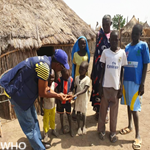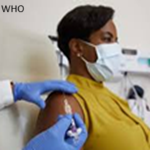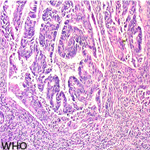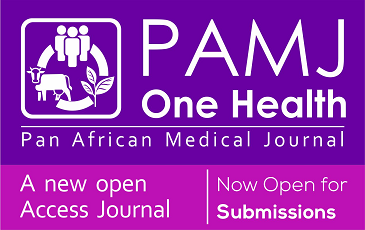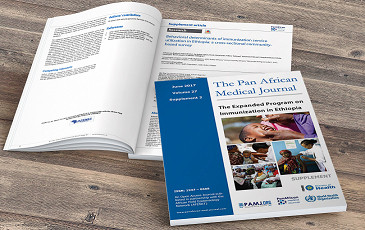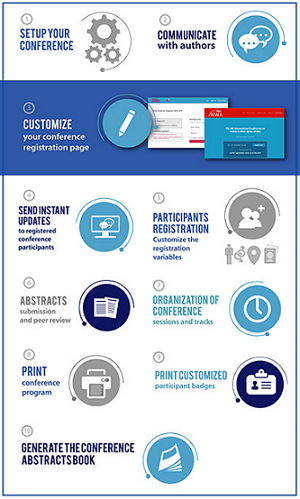Research 
Breastfeeding practices among women with diabetes: a cross-sectional study in a Tunisian hospital
Breastfeeding practices among women with diabetes: a cross-sectional study in a Tunisian hospital
Chaima Sdiri1,&, Haifa Abdesselem1, Kamilia Ounaissa1, Fatma Boukhayatia1, ![]() Emna Bornaz1, Asma Ben Brahim1, Rim Yahyaoui1, Chiraz Amrouche1
Emna Bornaz1, Asma Ben Brahim1, Rim Yahyaoui1, Chiraz Amrouche1
&Corresponding author
Introduction: in literature, women with diabetes breastfeed less than other women of childbearing age. Our study aimed to determine the rates and modalities of breastfeeding in women with diabetes during six months post-delivery and to determine the factors associated with it.
Methods: a prospective descriptive observational study was conducted in the Department of Nutritional Diseases "D" at the National Institute of Nutrition of Tunis over 18 months from January 2022 to June 2023. Breastfeeding in women with diabetes was assessed at one week (T1) in 78 patients, two months (T2) in 52 patients and six months (T3) post-delivery in 30 patients. Women with gestational diabetes and women who had an abortion, an intrauterine fetal death, or neonatal death, were excluded. Multivariable logistic regression analysis was performed to identify factors associated with breastfeeding.
Results: the mean age of participants was 35.1±4.8 years. Most patients (82%) had type 2 diabetes. Exclusive breastfeeding rates were 40%, 44%, and 10% at T1, T2, and T3, respectively. Partial breastfeeding rates were 42%, 33%, and 40%, respectively. Multivariable analysis showed that the husband's encouragement (aOR: 2.45, 95% CI 1.34-4.12; p=0.003) was positively associated with breastfeeding, while prematurity (aOR: 0.56, 95% CI 0.34-0.92; p=0.02) was negatively associated. Other barriers included insufficient milk (p=0.001) and breast refusal (p < 0.001).
Conclusion: factors promoting or hindering breastfeeding, such as family support and neonatal complications, should be systematically addressed in the postpartum care of women with diabetes.
Breastfeeding is recommended and encouraged for mothers, as it offers various health advantages for mothers and children [1-4]. Breast milk represents the best source of nourishment for the development of infants. Therefore, the World Health Organization (WHO) recommends exclusive breastfeeding at least six months [5]. However, despite strong evidence supporting WHO recommendations, there are significant fluctuations in the rates of breastfeeding, and multiple investigations have shown that women with diabetes, especially women with insulin-treated diabetes had the poorest outcomes concerning breastfeeding rates [6].
The existing literature had identified several factors associated with low breastfeeding adherence among women with diabetes, such as type of diabetes, antenatal care, prematurity, neonatal morbidity, high cesarean section rates, as well as young maternal age, multiparity, smoking and poor socio-economic conditions, etc. [6-8]. According to the 2018 Multiple Indicator Cluster Survey (MICS) in Tunisia, 92.2% of most recent live births in the last two years were breastfed, and 31.6% were breastfed within the first hour after birth. However, only 13.5% of infants were exclusively breastfed for the first six months of life [9]. However, national data focusing specifically on breastfeeding among women with diabetes are lacking. Given the increased maternal and neonatal risks associated with diabetes, understanding breastfeeding practices in this population is crucial to inform targeted interventions. This study aims to determine breastfeeding rates and practices among women with diabetes who consulted the Department of Nutritional Diseases (D) over one year and to identify factors associated with breastfeeding in this population.
Study design and setting: a prospective descriptive observational study was conducted at the Nutrition Diseases Department "D" of the National Institute "Zouhaier Kallel" of Nutrition and Food Technology of Tunis. The study spanned 18 months, from January 2022 to June 2023, and included four successive consultations to gather comprehensive participant data.
Study population: the study targeted pregnant women with type 1 or type 2 diabetes, as well as women not previously diagnosed with diabetes but exhibiting a fasting blood glucose level of ≥1.26 g/dL and/or glycosylated hemoglobin (A1c) ≥6.5% in early pregnancy. Women with gestational diabetes and those who experienced abortion, intrauterine fetal death, or neonatal death were excluded. Eligible participants were identified through routine clinical visits during the study period.
Data collection: data were collected during four consultations. At the initial pregnancy consultation, information was gathered on general characteristics, obstetric history, diabetes characteristics, and breastfeeding knowledge. We assessed diabetes control by measuring the mean of the last three A1C.
Postpartum data were collected via phone within the first week (T1) to assess delivery methods, maternal and fetal complications, and breastfeeding practices. In the case of exclusive breastfeeding, we considered as criteria of effectiveness of breastfeeding: several feedings per day between 8 and 12, a change of heavy diapers 5 to 6 times per day and the presence of more than 3 soft yellowish granular stools per day.
Follow-up evaluations at two months (T2) and six months (T3) postpartum included assessments of socio-demographic factors such as return to work, socio-economic level and the role of the husband concerning breastfeeding, weight variations, glycemic control, hypoglycemic episodes, and breastfeeding modalities including number of feeds per day, use of a breast pump, obstacles to breastfeeding, diversification of the infant's diet and weight of the infant with calculation of the baby's weight gain. Instruments included structured questionnaires and clinical records, and measurements followed standard protocols.
Definitions: socio-economic level was classified based on annual per capita expenditure: low (≤1503 Tunisian dinars), medium (1504-3629 Tunisian dinars), and high (>3629 Tunisian dinars). Pre-gestational weight status was assessed using the WHO Body Mass Index (BMI) classification, with obesity defined as a BMI ≥30 kg/m². Hypoglycemia is defined as blood glucose levels below 0.7 g/l.
Statistical analysis: all statistical analyses were performed using the Statistical Package for Social Science, version 26.0. For univariate analysis, we used one-way analysis of variance (ANOVA) to compare means across more than two groups, Pearson's chi-square test or Fisher's exact test for percentage comparisons, and Pearson's correlation coefficient to assess linear relationships between continuous variables. Paired-sample t-tests were performed to compare pre-test and post-test means for the same individuals. For multivariate analysis, we applied stepwise descending logistic regression. Initially, all factors with p-values < 0.05 and those between 0.05 and 0.15 from the univariate analysis were included in the model. At each step, the least significant factor was removed until the final model was obtained. Adjusted odds ratios were calculated to determine the independent effect of each factor. For all analyses, a two-tailed p-value of 0.05 was considered significant.
Ethical considerations: the study protocol was conducted under the ethical principles outlined in the Declaration of Helsinki. Before enrollment, all participants provided informed consent after being fully informed of the study's purpose. The ethical committee of the National Institute "Zouhaier Kallel" of Nutrition and Food Technology of Tunis approved this study on May 26, 2022, under reference 14/2022.
General characteristics of the study population: the study included 102 participants, as shown in the flowchart (Figure 1). Demographic and general characteristics of the population at the first consultation in diabetology are summarized (Table 1). The average duration of diabetes was 3.6±2.9 and 13.6±7.3 years, for patients with type 2 diabetes and type 1 diabetes, respectively. The average A1C was 7.8±1.6%, with extremes ranging from 5.9 to 12%. Twenty-two percent of patients reported a hypoglycemic episode. Metformin was prescribed to 51% of patients with type 2 diabetes. Human insulin was the most prescribed insulin among patients with type 1 diabetes.
Breastfeeding knowledge, practices and complications: the survey revealed varying levels of knowledge and perceptions about breastfeeding among participants. Regarding the recommended duration of breastfeeding, 63.7% believed it should last 24 months, while smaller proportions thought it should be 6 months (10.7%) or 12 months (3.9%). Notably, 19.6% of participants had no idea about the recommended duration. Concerning the ideal breastfeeding position, the majority (71.6%) identified the correct position as holding the baby in the mother's arms, whereas 9.8% suggested the baby should lie in front of the mother, and 18.6% had no idea. When asked about the benefits of breastfeeding for the baby, 52.9% recognized its role in promoting good growth, 22.5% highlighted its importance for immunity, and only 1% mentioned the enhanced mother-baby relationship. However, 22.5% had no knowledge of its benefits. The benefits of breastfeeding for the mother were far less known, with 80.4% unable to identify any advantages. Among those who were aware, 19.6% correctly identified breastfeeding as offering protection against breast cancer. Regarding foods to avoid during breastfeeding, 88.2% of participants had no knowledge, while only 6.9% demonstrated true knowledge. The remaining respondents provided partially true knowledge (2.9%) or false knowledge (2%). Similarly, in terms of foods to prioritize during breastfeeding, 83.3% of participants had no idea, while 6.9% displayed accurate knowledge, 5.9% had partially true knowledge, and 3.9% provided incorrect answers. This analysis underscores significant gaps in breastfeeding-related knowledge among the surveyed population.
The study identified various maternal and neonatal complications associated with diabetes during pregnancy. Among maternal complications, preeclampsia was the most frequent, occurring in 11% of cases (n=9), followed by diabetic ketoacidosis (8%, n=6) and maternal hypoglycemia (4%, n=3). Postpartum depression was also noted in 4% of cases (n=3). Neonatal complications were significant, with neonatal respiratory distress being the most common (27%, n=21), followed by macrosomia (23%, n=18) and fetal hypoglycemia (22%, n=17). Other complications included neonatal jaundice (5%, n=4) and neonatal hypotrophy (4%, n=3). Additionally, 8% of neonates (n=6) required hospitalization in the neonatal intensive care unit. Fetal malformations were observed in 8% of cases (n=6), with specific anomalies including cardiac malformations (n=3), hydrocephalus (n=2), and renal malformations (n=1). These findings highlight the multifaceted risks associated with diabetes during pregnancy and its impact on both maternal and neonatal health. One hour after delivery, no breastfeeding was noted among patients included in the study. Breastfeeding rates and practices were observed to vary at one week, two months, and six months postpartum (Table 2).
Factors associated with breastfeeding: in T1, successful breastfeeding was associated with a residence with a small family (p=0.048), better glycemic balance (p=0.028), and vaginal delivery (p=0.002). Factors such as diabetic ketoacidosis (p=0.008), maternal hypoglycemia (p=0.035), prematurity (p=0.035), insufficient breast milk (p=0.001), breast pain (p=0.022), breast refusal (p=0.001), newborn hospitalization (p<0.001), and delayed lactation onset (p<0.001) were associated with breastfeeding failure. In T2 and T3: the husband's encouragement of breastfeeding increased the woman's adherence to breastfeeding (p<0.001 and p=0.001). Insufficient breast milk quantity (p=0.001 and p=0.004), breast refusal (p<0.001 and p=0.003), and bottle adherence (p<0.001 and p=0.01) were the main obstacles. Multivariate analysis identified the husband's encouragement for mother to breastfeed: OR=0.009, 95%CI 0.001-0.119; p<0.001 and prematurity: OR=6.068, 95%CI 1.324-27.802; p=0.020, as factors independently associated with breastfeeding (Table 3).
Breastfeeding offers numerous benefits for both mothers and their babies. However, diabetes may complicate the initiation and continuation of breastfeeding. In this study, we investigated the rates and modalities of breastfeeding in a population of women with diabetes during the first six postpartum months and the associated factors.
This study reported no skin-to-skin contact and no breastfeeding was initiated within one hour after delivery. However, the MICS conducted in Tunisia in 2018, showed, a rate of skin-to-skin contact of 13% and a prevalence of breastfeeding within one hour after delivery of 31.6%, among 1,230 births [9]. Similarly, the study conducted by Soltani and Arden, in 2009, showed a breastfeeding rate at delivery of 66.7% in patients with type 1 diabetes and 81.8% in those with type 2 diabetes [10]. This difference between studies could be explained by the mandatory medical monitoring of babies immediately after birth in the nursery or neonatal units, especially those born to diabetic mothers, which may reduce the time of contact between the mother and the newborn.
One week after childbirth, we found exclusive and partial breastfeeding rates of 40% and 42%, respectively. Our results were similar to those found in the study conducted by Soltani and Arden [10]. The Cordero et al. study including 392 patients with diabetes, showed an exclusive breastfeeding rate of 3% and a partial breastfeeding rate of 35% among newborns who were kept in the nursery after birth. For babies admitted to the neonatal intensive care unit, 13% were exclusively breastfed, and 23% were partially breastfed [11]. Disparities in results could be partially attributed to the varying rates of maternal-fetal complications in previous studies, which may have extended the mother's recovery time and prolonged her separation from the baby. Our results showed that more than half of the patients had an A1c level >7% and that women who breastfed had a lower A1c level than those who did not breastfeed (p=0.028). These findings are consistent with the literature. Indeed, some studies have demonstrated a delay in lactogenesis in women with diabetes with poor glycemic control [12,13].
At two months postpartum, we found exclusive and partial breastfeeding rates of 44% and 33%, respectively. A study conducted in Sweden between 2007 and 2009 showed that 80.7% of women with type 1 diabetes were breastfeeding their babies at two months postpartum, with an exclusive breastfeeding rate of 80% [8]. Another study conducted in the same country between 2011 and 2014 demonstrated that the prevalence of breastfeeding had not changed (78.6%) [14]. These findings were corroborated by Ringholm et al., who showed that at this age, 73% of women with type 1 diabetes included in the study were breastfeeding their babies [15]. This difference could be explained by the high breastfeeding rate in this country, which exceeded 90% among non-diabetic women. In Italy, women with diabetes breastfed slightly less (66%) according to the Riviello et al. study conducted between 2006 and 2008 [16]. Our results showed that the initiation of breastfeeding at T1 was associated with continued breastfeeding up to two months postpartum (p<0.001). This association was confirmed by the study of Cordero et al. which demonstrated that initiation of breastfeeding at the time of hospital discharge was an important predictor of continued breastfeeding at two and four months among non-diabetic women and women with type 1 diabetes [11].
Our results showed exclusive and partial breastfeeding rates at six months postpartum of 10% and 40%, respectively. However, the MICS survey showed an exclusive breastfeeding rate in Tunisia of 13% [9]. The literature reports a wide range of results across different studies. Linden et al. found that 53% of women with type 1 diabetes in Sweden were breastfeeding their babies between 2011 and 2014 [14]. It is worth noting that the general Swedish population had one of the highest breastfeeding rates at six months globally, with 65% of infants being breastfed (any type of breastfeeding) and 10% exclusively breastfed [17]. In Finland, a study reported a very low breastfeeding rate among infants of mothers with type 1 diabetes, with only 1.4% exclusively breastfed [18]. A study conducted in Saudi Arabia in 2019 showed that 29.1% of diabetic patients exclusively breastfeed their babies for up to six months of age [19]. These disparities in results were due to significant differences in sample sizes across studies and various socio-cultural behaviors from one region to another.
In our study, the most reported barriers to breastfeeding by patients were insufficient breast milk production or a complete absence of milk (p=0.004), baby's refusal of the breast (p=0.003), and baby's preference for the bottle (p=0.01). These findings are consistent with the results of a survey conducted in England that aimed to investigate the reasons why women with diabetes had stopped breastfeeding. The most reported reasons were lack of milk (25%), problems with latching (13%), time constraints (13%), returning to work (11%), maternal health conditions (9%), convenience (5%), and natural weaning progression (22%) [20].
Overall, the study has several strengths and limitations which were considered when interpreting the findings. To our knowledge, it is the first Tunisian study focused on breastfeeding in women with diabetes. Its prospective design allowed us to follow women with diabetes from their first diabetology consultation during pregnancy up to six months postpartum. However, a significant number of patients were lost to follow-up: only 52 were followed until two months postpartum, and just 30 completed the study. This may be attributed to challenges in finding childcare during appointments and the impact of the fifth wave of COVID-19, which hindered hospital visits. Additionally, the study did not assess the nutritional intake of breastfeeding women, which could influence glycemic control and breastfeeding continuation.
The results showed that in T1, successful breastfeeding was associated with a residence with a small family, better glycemic control and vaginal delivery. Factors such as diabetic ketoacidosis, maternal hypoglycemia, prematurity, insufficient breast milk, breast pain, breast refusal, newborn hospitalization and delayed lactation onset, were associated with breastfeeding failure. In T2 and T3, husband's encouragement of breastfeeding increased women's adherence to breastfeeding. Insufficient breast milk quantity, breast refusal and bottle adherence were the main obstacles. Multivariate analysis identified the husband's encouragement of breastfeeding and prematurity as factors independently associated with breastfeeding. Breastfeeding should be an absolute priority. We suggest promoting skin-to-skin contact and emphasizing the role of the surrounding environment, particularly the husband's role.
What is known about this topic
- Breastfeeding rates are lower in women with diabetes due to medical and psychosocial barriers;
- Diabetic women face challenges like delayed lactogenesis, milk production concerns, and glycemic control;
- Diabetes-related complications may negatively impact breastfeeding initiation and duration.
What this study adds
- Identifies delayed lactogenesis, insufficient milk production, and neonatal hospitalization as major barriers to breastfeeding among diabetic women;
- Highlights the protective role of partner and family support in promoting breastfeeding continuation;
- Emphasizes the importance of early breastfeeding initiation, rooming-in, skin-to-skin contact, and lactation support for diabetic mothers.
The authors declare no competing interests.
Conception and study design: Chaima Sdiri, Haifa Abdesselem and Chiraz Amrouche. Data collection: Chaima Sdiri. Data analysis and interpretation: Chaima Sdiri, Haifa Abdesselem, Emna Bornaz. Manuscript drafting: Chaima Sdiri and Haifa Abdesselem. Manuscript revision: Kamilia Ounaissa, Fatma Boukhayatia, Emna Bornaz, Asma Ben Brahim, Rim Yahyaoui and Chiraz Amrouche. Guarantor of the study: Chaima Sdiri. All authors read and approved the final version of the manuscript.
We extend our gratitude to the patients for their participation and the medical staff at the Department of Nutritional Diseases "D" at the National Institute of Nutrition of Tunis, for their invaluable support.
Table 1: study population characteristics at the first consultation in diabetology
Table 2: breastfeeding rates and practices at one week, two months and six months after delivery
Table 3: factors associated with success or failure of breastfeeding one week, two months and six months after childbirth
Figure 1: flowchart of the study population
- Stuebe A. Associations Among Lactation, Maternal Carbohydrate Metabolism, and Cardiovascular Health. Clin Obstet Gynecol. 2015;58(4):827-839. PubMed | Google Scholar
- Nguyen B, Jin K, Ding D. Breastfeeding and maternal cardiovascular risk factors and outcomes: A systematic review. PLoS One. 2017 Nov 29;12(11):e0187923. PubMed | Google Scholar
- Gunderson EP, Hurston SR, Ning X, Lo JC, Crites Y, Walton D et al. Lactation and Progression to Type 2 Diabetes Mellitus After Gestational Diabetes Mellitus: A Prospective Cohort Study. Ann Intern Med. 2015;163(12):889-898. PubMed | Google Scholar
- Binns C, Lee M, Low WY. The Long-Term Public Health Benefits of Breastfeeding. Asia Pac J Public Health. 2016 Jan;28(1):7-14. PubMed | Google Scholar
- World Health Organization (WHO). Global strategy on infant and young child feeding. Accessed 16th April 2023.
- Finkelstein SA, Keely E, Feig DS, Tu X, Yasseen AS, Walker M. Breastfeeding in women with diabetes: lower rates despite greater rewards. A population-based study. Diabet Med. 2013;30(9):1094-1101. PubMed | Google Scholar
- Hummel S, Winkler C, Schoen S, Knopff A, Marienfeld S, Bonifacio E et al. Breastfeeding habits in families with Type 1 diabetes: Original article. Diabet Med. 2007;24(6):671-676. PubMed | Google Scholar
- Sparud-Lundin C, Wennergren M, Elfvin A, Berg M. Breastfeeding in Women With Type 1 Diabetes. Diabetes Care. 2011;34(2):296-301. PubMed | Google Scholar
- UNICEF. Enquête par grappes à indicateurs multiples (MICS) 2018: rapport final des résultats. Accessed 16th April 2023.
- Soltani H, Arden M. Factors Associated With Breastfeeding Up To 6 Months Postpartum in Mothers With Diabetes. J Obstet Gynecol Neonatal Nurs. 2009;38(5):586-594. PubMed | Google Scholar
- Cordero L, Thung S, Landon MB, Nankervis CA. Breast-feeding Initiation in Women With Pregestational Diabetes Mellitus. Clin Pediatr (Phila). 2014;53(1):18-25. PubMed | Google Scholar
- Ferris AM, Dalidowitz CK, Ingardia CM, Reece EA, Fumia FD, Jensen RG et al. Lactation outcome in insulin-dependent diabetic women. J Am Diet Assoc. 1988;88(3):317-322. PubMed | Google Scholar
- Ostrom KM, Ferris AM. Prolactin concentrations in serum and milk of mothers with and without insulin-dependent diabetes mellitus. Am J Clin Nutr. 1993;58(1):49-53. PubMed | Google Scholar
- Linden K, Berg M, Adolfsson A, Sparud-Lundin C. Well-being, diabetes management and breastfeeding in mothers with type 1 diabetes - An explorative analysis. Sex Reprod Healthc. 2018;15:77-82. PubMed | Google Scholar
- Ringholm L, Roskjær AB, Engberg S, Andersen HU, Secher AL, Damm P et al. Breastfeeding at night is rarely followed by hypoglycaemia in women with type 1 diabetes using carbohydrate counting and flexible insulin therapy. Diabetologia. 2019;62(3):387-398. PubMed | Google Scholar
- Riviello C, Mello G, Jovanovic LG. Breastfeeding and the Basal Insulin Requirement in Type 1 Diabetic Women. Endocr Pract. 2009;15(3):187-193. PubMed | Google Scholar
- Rasmussen B, Skouteris H, Berg M, Nagle C, Morris H, Nankervis A et al. Breastfeeding practices in women with type 1 diabetes: A discussion of the psychosocial factors and policies in Sweden and Australia. Women and Birth. 2015;28(1):71-75. PubMed | Google Scholar
- Sorkio S, Cuthbertson D, Bärlund S, Reunanen A, Nucci AM, Berseth CL et al. Breastfeeding patterns of mothers with type 1 diabetes: Results from an infant feeding trial. Diabetes Metab Res Rev. 2010;26(3):206-211. PubMed | Google Scholar
- Al-Anazi OM, Mohammad Haneef MS, Zafar M, Ahsan M. Association of Maternal Obesity and Diabetes Mellitus with Exclusive Breastfeeding Among Saudi Mothers in Jubail, Saudi Arabia. Int J Prev Med. 2022;13:68. PubMed | Google Scholar
- Soltani H, Dickinson FM, Kalk J, Payne K. Breast feeding practices and views among diabetic women: a retrospective cohort study. Midwifery. 2008;24(4):471-479. PubMed | Google Scholar





